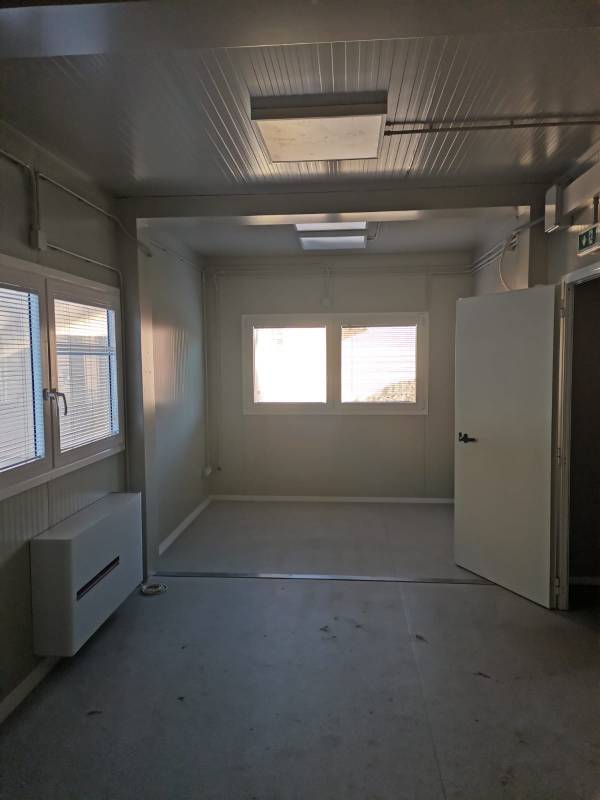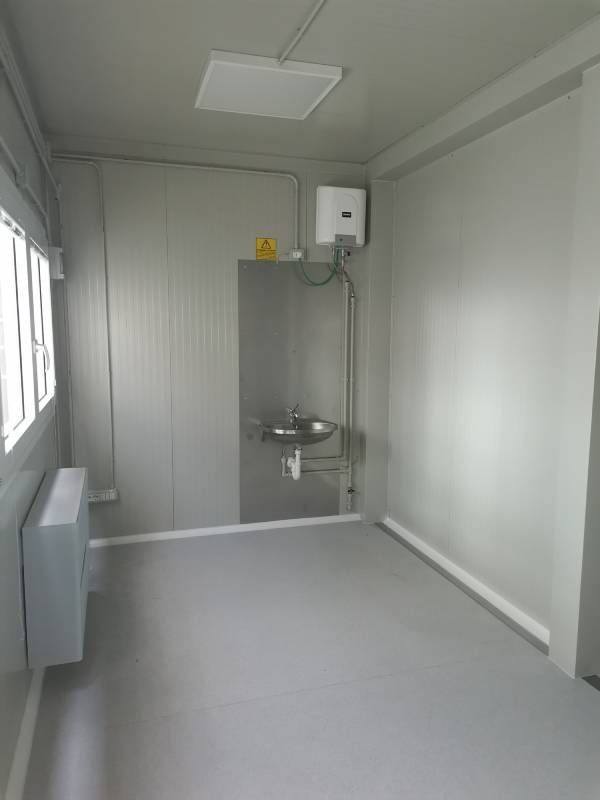Residential Prefabricated Buildings and Habitable Containers: Differences and Possible Customizations
Living in a Sogese prefabricated home offers an innovative and high-end solution for those seeking a unique living experience. These homes combine traditional comfort with modern design, providing a harmonious space that includes a sleeping area, a welcoming living area, a fully equipped kitchen, and a bathroom with a shower.
The concept behind the prefabricated modules stems from Sogese’s commitment to meet the growing market demand for housing solutions that combine comfort and design with savings, versatility, and logistical convenience.
These homes represent a concrete response to the international demand for housing solutions, both in emergency and normal conditions, with the advantage of rapid delivery and the possibility of immediately enjoying a high-design environment, already divided into sleeping, kitchen, living, and bathroom areas.
In the world of innovative housing solutions, two concepts stand out: ‘residential prefabricated buildings’ and ‘habitable containers.’ Although at first glance they may seem similar, these two options offer distinctive features that meet different needs.
Residential Prefabricated Buildings: Modularity and Customization
Residential prefabricated buildings are structures built in a factory and then assembled on the final site. This category includes a wide range of solutions, from small homes to large residential complexes. Their main feature is modularity, which allows a great variety of customizations in terms of dimensions, configurations of openings, and insulation thicknesses. We can indeed operate with variations in height, configuration of openings or closures, insulation thicknesses, fixtures, and accessories. The characteristic of assembling multiple prefabricated modules allows for sizes ranging from 14 sqm to over 600 sqm.
Advantages:
- Customization: With prefabricated buildings, it is possible to modify the height, interior layout, and insulation according to specific needs;
- Scalability: They are easily assembled and can cover surfaces from small to very large, adapting to different uses and sizes;
- Rapid installation: Since they are pre-built, the installation time on-site is significantly reduced compared to traditional construction.


Living container: efficiency and sustainability
Living containers, on the other hand, are shipping containers transformed into living spaces. These containers meet ISO standards and offer an efficient and sustainable solution for housing, especially in contexts like campsites or tourist villages.
Residential container have fixed and indispensable dimensions, and are predominantly requested by campsites and tourist villages.
Advantages:
- Efficiency: The fixed and standardized dimensions of the containers facilitate transportation and installation;
- Creative recycling: Using shipping containers for housing represents a form of innovative recycling, reducing the environmental impact;
- Cost: Transforming a container into a dwelling is cheaper compared to building a home from scratch.
Points of convergence and divergence
While residential prefabricated buildings offer greater flexibility in terms of design and customization, habitable containers are a more pragmatic and eco-sustainable choice, especially for short-term projects or temporary solutions. The choice between the two will depend on the specific needs of the project: prefabricated buildings are ideal for those looking for a customizable and scalable solution, while containers are perfect for those who need a quick, economical, and eco-friendly solution.
Both residential prefabricated buildings and habitable containers offer innovative and functional housing solutions, each with its own peculiarities and advantages. The ideal choice will depend on the specific needs, budget, and sustainability goals of each project.